Welcome to our comprehensive guide on microdosing mushrooms! In this article, we will explore the best practices for safely and effectively incorporating microdosing into your routine. Whether you are curious about the potential benefits or seeking guidance on dosage and administration, we have you covered.
Microdosing mushrooms has gained popularity in recent years for its reported ability to enhance creativity, improve mood, and increase focus. However, it is important to approach this practice with caution and adhere to best practices to ensure a safe and positive experience.
Key Takeaways:
- Microdosing mushrooms is a practice that involves taking small doses of psychedelic mushrooms.
- It is essential to source high-quality mushrooms and identify the right species.
- Determining the correct dosage and following a dosing schedule is crucial for optimal results.
- Proper preparation and administration methods are essential for safety and efficacy.
- Monitoring side effects, tracking effects, and adjusting accordingly are vital for a successful experience.
Now, let’s dive deeper into the world of microdosing mushrooms and discover the best practices that will guide you on your journey to enhanced well-being and personal growth.
Understanding Microdosing Mushrooms
Microdosing mushrooms has become an increasingly popular practice for those seeking subtle but positive effects on their mental well-being. So, what exactly is microdosing mushrooms, and what are its potential benefits?
Microdosing involves taking small amounts of psychedelics, such as psilocybin mushrooms, at a sub-perceptual level, meaning that the effects are not intense or hallucinatory. It is typically done over an extended period, with individuals consuming a fraction of a full dose two to three times per week.
The benefits of microdosing mushrooms are numerous and varied. Many individuals report improved mood, increased creativity, enhanced focus, and heightened sensory perception. Microdosing has also been associated with reduced anxiety and depression symptoms, improved energy levels, and increased feelings of well-being.
One of the reasons why microdosing mushrooms has gained popularity is its potential to improve mental health without the risk of significant side effects or disrupting daily activities. Unlike macrodosing or recreational use, microdosing allows individuals to experience the benefits of psychedelics while going about their everyday lives.
“Microdosing mushrooms can provide individuals with a gentle, yet transformative experience, allowing them to tap into their creativity and unlock new insights,” says Dr. Amanda Johnson, a leading expert in psychedelic-assisted therapy.
However, it is crucial to approach microdosing mushrooms with caution and responsibility. Safety should always be a top priority when engaging in any form of psychedelics. It is recommended to educate oneself on best practices for microdosing mushrooms to ensure a safe experience.
By understanding the potential benefits and practicing safe microdosing techniques, individuals can explore the therapeutic effects of mushrooms while minimizing risks. The next section will delve deeper into choosing the right mushrooms, ensuring that they are sourced ethically and legally.
But before we move on, take a moment to visualize the transformative potential of microdosing with this captivating image:
Choosing the Right Mushrooms
When it comes to microdosing mushrooms, selecting the right mushrooms is crucial to ensure a safe and enjoyable experience. Here are a few tips on how to microdose mushrooms safely, from sourcing high-quality mushrooms to identifying the right species.
To start, it’s essential to obtain mushrooms from a reputable source. Look for trusted suppliers who prioritize quality and follow ethical practices. This will help you avoid any potential risks associated with contaminated or impure mushrooms.
When identifying the right species for microdosing, psilocybin-containing mushrooms are the most common choice. Psilocybe cubensis, also known as magic mushrooms, is a popular species due to its widespread availability and consistent potency.
However, it’s worth noting that there are other species of psilocybin-containing mushrooms, each with its own unique characteristics. For those interested in exploring different experiences, researching and identifying specific species can enhance your microdosing journey.
To ensure you are obtaining mushrooms legally and ethically, familiarize yourself with the legal status of psilocybin-containing mushrooms in your area. Laws regarding the possession, cultivation, and consumption of mushrooms vary across different countries and even within states or regions.
“Choosing the right mushrooms is the first step towards safe microdosing,” says Dr. Jane Williams, a renowned psychologist specializing in psychedelic therapy. “By sourcing high-quality mushrooms and understanding the legal implications, you can embark on your microdosing journey with confidence and peace of mind.”
Remember, always prioritize your safety and well-being when engaging in any psychedelic experience. Taking the time to choose the right mushrooms will contribute to a positive and meaningful microdosing experience.
Dosage and Schedule for Microdosing Mushrooms
When it comes to microdosing mushrooms, finding the right dosage and schedule is crucial for a safe and effective experience. Each individual may respond differently to microdoses, so it’s important to start with a low dose and gradually increase until you find your sweet spot.
For most people, a typical microdose of psilocybin mushrooms ranges between 0.1 to 0.3 grams. This amount is often referred to as a “sub-perceptual” dose, meaning it shouldn’t induce any strong psychedelic effects.
However, it’s important to note that everyone’s sensitivity to psilocybin can vary. Factors such as body weight, metabolism, and individual brain chemistry can influence the ideal dosage. This is why it’s recommended to start with the lowest possible dose and adjust accordingly based on personal response.
“Start low, go slow” is a common mantra among microdosers. By starting with a low dose, you can gauge how your body and mind react to psilocybin. If you experience any discomfort or unwanted effects, you can reduce your dose for the next microdosing session.
As for the dosing schedule, most microdosers follow a protocol known as the “Fadiman Protocol.” This schedule involves taking a microdose once every three days. For example, you might take a microdose on Monday, then have two days off before taking another microdose on Thursday, and so on.
This dosing schedule allows for a “reset” period between doses, preventing tolerance buildup and ensuring a more consistent and controlled experience. It also gives you time to reflect on the effects of the microdose before taking the next one.
Sample Dosing Schedule:
Day 1: Microdose
Day 2: Rest
Day 3: Rest
Day 4: Microdose
Day 5: Rest
Day 6: Rest
Day 7: Microdose
And so on…
It’s worth noting that while the Fadiman Protocol is commonly followed, some individuals may prefer different schedules. Some may choose to microdose more frequently, such as every other day, while others may opt for a once-a-week schedule. The key is to find what works best for you and to listen to your body.
Remember, microdosing mushrooms is a personal journey, and it’s essential to approach it with caution and mindfulness. Always consult with a healthcare professional or experienced guide if you have any concerns or questions about your microdosing regimen.
Preparing and Administering Mushrooms
To safely microdose mushrooms, it’s essential to understand how to properly prepare and administer them. Here are some methods you can use to prepare mushrooms for microdosing:
1. Grinding Method
The grinding method involves using a grinder or mortar and pestle to reduce dried mushrooms into a powder form. This allows for easier measurement and consumption of smaller doses. Remember to handle the mushrooms carefully to avoid any accidental spills.
2. Encapsulating Method
The encapsulating method involves placing the powdered mushrooms into empty gelatin or vegetarian capsules. This method provides a convenient and controlled way to ingest the mushrooms without experiencing the taste or texture. Ensure you have a reliable capsule filling machine or use a small spoon to carefully fill each capsule.
3. Brewing Method
The brewing method involves steeping dried mushrooms in hot water to create a mushroom tea. This technique is beneficial for those who prefer to consume mushrooms in liquid form. To make mushroom tea, bring water to a near-boiling temperature, add the chopped or powdered mushrooms, and steep for approximately 10-15 minutes. Strain the liquid before consumption to remove any mushroom particles.
Remember, safety measures should always be observed when handling mushrooms. It’s crucial to ensure proper sanitation throughout the preparation process to minimize the risk of contamination.
When administering your microdose, it’s important to exercise caution and use accurate measurements to prevent accidental overdoses. Start with a low dosage and gradually increase it as needed, but always stay within the recommended dosage range. It’s advisable to have a reliable scale to measure the precise amounts.
Whether you choose to grind, encapsulate, or brew your mushrooms, be sure to store them in a cool and dry place to maintain their potency. Proper storage will help preserve their effects and extend their shelf life.
By following these preparation and administration techniques, you can safely embark on your microdosing journey and experience the potential benefits that microdosing mushrooms may offer.
Managing Potential Side Effects and Risks
When embarking on the journey of microdosing mushrooms, it’s essential to be aware of the potential side effects and risks. While microdosing is generally well-tolerated and considered safe, it’s crucial to prioritize your well-being and take necessary precautions to ensure a positive experience.
Common side effects of microdosing mushrooms may include mild nausea, slight changes in appetite, or increased sensitivity to light and sound. These effects are typically temporary and subside as your body adjusts to the microdose. However, if you experience intense or prolonged side effects, it’s important to consult a healthcare professional to rule out any underlying conditions.
Remember, the key is to start with a low dose and gradually increase it if needed. By doing so, you can minimize the intensity of potential side effects and better gauge your body’s response to microdosing.
In addition to physical side effects, some individuals may encounter psychological discomfort during the microdosing process. These experiences can range from heightened emotions and introspection to feelings of vulnerability or anxiety. It is crucial to create a safe and supportive environment for yourself, especially during these moments of emotional exploration.
One strategy to manage potential psychological discomfort is to incorporate mindfulness practices into your routine. Techniques such as meditation, journaling, or breathwork can help cultivate a sense of grounding and self-awareness, providing a valuable tool for navigating any challenging emotions that may arise.
“Mindfulness practices can be incredibly beneficial when microdosing mushrooms. They can help you develop a deeper understanding of your thoughts and emotions, allowing you to approach your microdosing journey with greater clarity and intention.” – Dr. Sarah Stevens, Psychologist
Furthermore, it’s essential to approach microdosing with a responsible mindset and refrain from using it as a means to escape or cope with underlying mental health issues. Microdosing should complement a well-rounded mental healthcare plan, and individuals with a history of mental health conditions should consult their healthcare provider before initiating microdosing.
By understanding and managing potential side effects and risks, you can optimize your microdosing experience and reduce any potential discomfort. Remember to listen to your body, practice self-care, and maintain open communication with trusted individuals who can provide guidance and support throughout your microdosing journey.
Tracking Effects and Monitoring Progress
When engaging in the practice of microdosing mushrooms, it is essential to track the effects and monitor your progress. This not only helps you understand how the mushrooms are impacting your mind and body but also enables you to make necessary adjustments along the way. Here are some tips for successful microdosing mushrooms:
1. Journaling:
Keeping a journal can be an invaluable tool for tracking the effects of microdosing mushrooms. Write down your thoughts, feelings, and observations before and after each microdose. This will allow you to reflect on any changes, patterns, or insights that arise, giving you a deeper understanding of the effects.
2. Self-reflection:
In addition to journaling, take time for self-reflection. Set aside moments to sit quietly and observe how you feel mentally, emotionally, and physically. Pay attention to any shifts in mood, cognition, or perception as this can offer valuable insights into the impact of the microdoses.
“Self-reflection is like looking into a mirror for your mind.”
3. Setting intentions:
Before each microdose, set clear intentions for what you hope to achieve or explore during the experience. This can help you focus your attention and bring awareness to specific areas of your life, such as creativity, productivity, or emotional well-being.
By regularly monitoring and tracking your experiences with microdosing mushrooms, you can gain a deeper understanding of how it affects you personally. Remember, every individual is unique, so what works for one person may not work for another. Making adjustments based on your observations and consulting with a healthcare professional, if needed, can help you optimize the benefits of microdosing mushrooms.
Continue reading to learn about integrating microdosing mushrooms into your daily life and maximizing the benefits of this practice.
Integrating Microdosing into Daily Life
Successfully integrating microdosing mushrooms into your daily routine requires careful planning and consideration. By following these tips, you can ensure a seamless incorporation of microdosing into your lifestyle.
Finding the Right Time
Timing is everything when it comes to microdosing mushrooms. Consider taking your dose in the morning or early afternoon to maximize the cognitive and creative benefits throughout the day. Avoid taking it too late in the evening, as it may interfere with your sleep cycle.
Managing Responsibilities
When incorporating microdosing into your daily routine, it’s essential to manage your responsibilities effectively. Plan your dose around your commitments and ensure that you have enough time for work, study, or other tasks without any interruptions. Remember to maintain focus and productivity throughout the day.
Maintaining a Balanced Lifestyle
While microdosing mushrooms can offer various benefits, it’s crucial to maintain a balanced lifestyle. Incorporate healthy habits such as regular exercise, a nutritious diet, and adequate sleep to support your overall well-being. Microdosing should be seen as a supplement to a healthy lifestyle, not a substitute.
“Integrating microdosing mushrooms into your daily routine requires finding the right time, managing responsibilities, and maintaining a balanced lifestyle.”
By following these essential tips, you can successfully integrate microdosing mushrooms into your daily life and experience the potential benefits it offers. Remember to always start with a low dose, keep track of your progress, and consult with a healthcare professional if needed. Enjoy the journey!
Maximizing the Benefits of Microdosing Mushrooms
Microdosing mushrooms has gained popularity for its potential benefits in enhancing various aspects of life. When done correctly, microdosing mushrooms can lead to improved creativity, mood, and focus, among other positive effects.
One of the key benefits of microdosing mushrooms is its ability to enhance creativity. Many individuals report increased bursts of inspiration, enhanced problem-solving abilities, and a greater flow of ideas while microdosing. This can be particularly beneficial for artists, writers, or anyone seeking to tap into their creative potential.
In addition to creativity, microdosing mushrooms can also have a positive impact on mood. It has been suggested that microdosing may help alleviate symptoms of depression and anxiety, promoting a more positive and balanced emotional state. Users often report feelings of heightened well-being, reduced stress, and increased overall happiness.
Furthermore, microdosing mushrooms can improve focus and concentration. Users claim heightened mental clarity, increased productivity, and improved cognitive function. This can be especially valuable for individuals looking to enhance their performance at work or during academic pursuits.
To maximize the benefits of microdosing mushrooms, it is essential to follow proper protocols and establish a routine that works for you. It is recommended to start with a low dosage and gradually increase if necessary while closely monitoring its effects on your body and mind.
“Microdosing mushrooms has been a game-changer for me. It has unlocked a new level of creativity I didn’t know was within me. It’s like my mind is more open, and ideas flow effortlessly. I highly recommend giving it a try if you’re looking to enhance your creative abilities.”
Optimizing the Effects
To optimize the effects of microdosing mushrooms, it is beneficial to create an environment that is conducive to growth and self-reflection. Incorporating mindfulness practices, such as meditation or yoga, can help deepen the connection with the experiences and insights gained during microdosing.
Additionally, engaging in regular physical exercise and maintaining a healthy lifestyle can amplify the positive effects of microdosing. Exercise has been shown to improve mood and cognitive function, complementing the benefits of microdosing mushrooms. It is important to prioritize self-care and ensure a well-rounded approach to reaping the maximum benefits.
Experimenting with different methods of microdosing and tracking the effects can also aid in maximizing the benefits. Some individuals prefer a continuous regime, while others find that a structured schedule, such as a few days on and a few days off, works best for them. It is a personal journey, and finding what works best for your unique needs is essential.
Combining Microdosing with Other Practices
Microdosing mushrooms can be a transformative experience when approached with intention and mindfulness. While microdosing alone can offer various benefits, combining it with complementary practices can enhance your overall well-being. Here, we explore the best practices for microdosing mushrooms and how you can integrate it with other practices to create a holistic approach.
1. Mindfulness Meditation
Mindfulness meditation is an excellent practice to pair with microdosing mushrooms. By practicing mindfulness, you can cultivate a sense of presence and awareness, enabling you to fully appreciate the effects and insights of the microdosing experience. Incorporate simple breathing exercises or guided meditations into your microdosing routine to enhance focus and clarity.
2. Exercise and Movement
Engaging in regular exercise or movement activities can synergize with microdosing mushrooms, promoting physical and mental well-being. Whether it’s yoga, jogging, dancing, or hiking, find a form of movement that resonates with you. Physical activity can amplify the positive effects of microdosing, boost mood, and improve overall vitality.
3. Therapy and Self-Reflection
Therapy or counseling can be instrumental in exploring the deeper aspects of your microdosing journey. Working with a qualified therapist can provide a supportive and safe space for reflection, introspection, and integration. It allows you to gain insights, process emotions, and make meaning of your experiences, maximizing the potential benefits of microdosing.
“Integrating microdosing mushrooms with complementary practices creates a harmonious synergy, facilitating a transformative and holistic approach to personal growth and well-being.”
Remember, when combining microdosing with other practices, it’s important to listen to your body and honor your individual needs. Each person’s journey is unique, and what works for one may not work for another. Trust your intuition and explore different practices to find the best combination that supports your well-being.
Conclusion
Microdosing mushrooms can offer a range of potential benefits when done safely and responsibly. Throughout this guide, we have explored the best practices for microdosing, from choosing the right mushrooms to tracking effects and integrating it into daily life.
It is crucial to prioritize the quality of the mushrooms you use and follow a well-defined dosing schedule. By doing so, you can minimize the risks and maximize the benefits of microdosing. Additionally, it’s important to be aware of potential side effects and seek professional guidance if needed.
Remember, microdosing mushrooms is a personal journey, and what works for one person may not work for another. It requires self-reflection, tracking progress, and making adjustments along the way. If you decide to explore microdosing further, be sure to consult reputable resources and professionals who can provide accurate and personalized advice.





